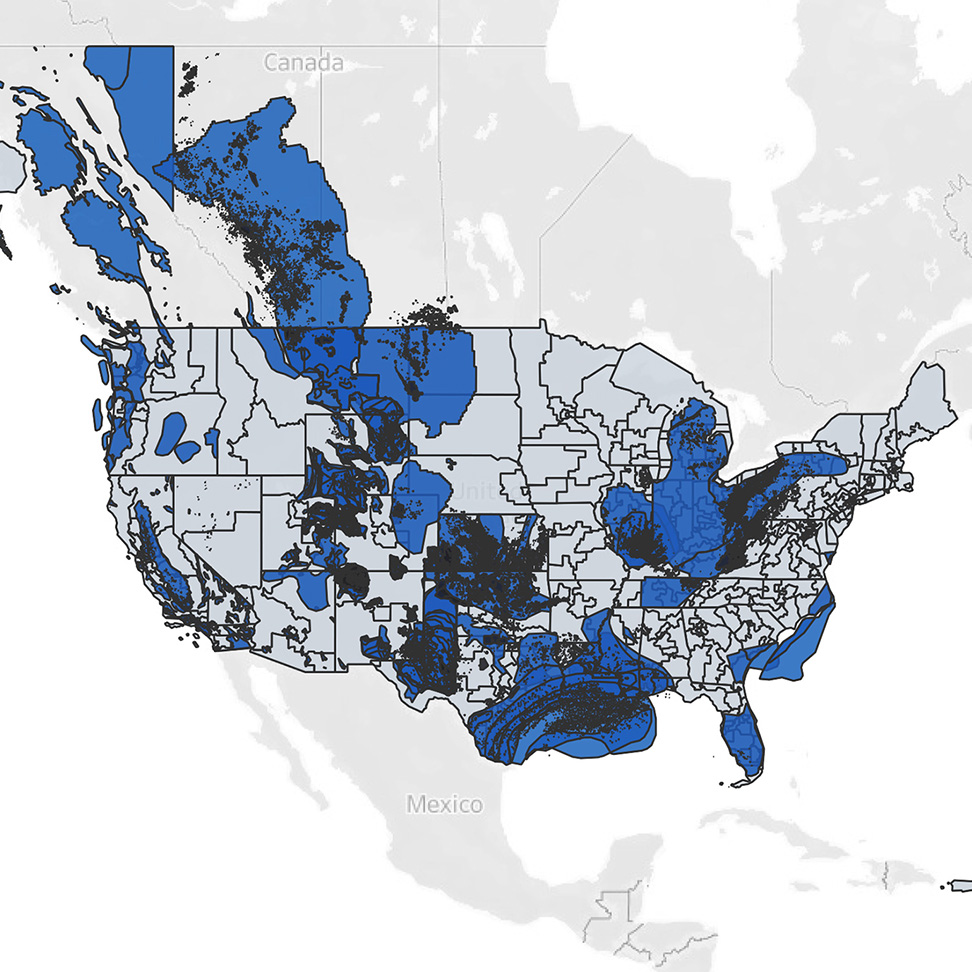Later this year, the Environmental Protection Agency is expected to approve the state of Louisiana’s application for primary enforcement authority (or “primacy”) for Class VI underground injection wells. Louisiana would become the third state with primacy for Class VI under the program, joining North Dakota and Wyoming.
In those three states, the EPA delegates authority over the permitting process for Class VI wells, which are used by industry to inject captured carbon deep underground into rock formations for permanent storage. It’s an important process as part of broad efforts to reduce carbon emissions, and primacy is a vital tool being increasingly pursued for making that process more efficient.
What are Class VI injection wells?
Industries looking to reduce carbon emissions have the option under the Underground Injection Control (UIC) program to inject captured CO2 deep underground, often into unused saline aquifers. These must be at least 3,600 feet deep to reach temperatures and pressures that will maintain the CO2 in a supercritical state, which is more stable for permanent storage.
The injection wells need to target an area beneath a rock formation that will seal it in place. The Class VI well permitting program is designed to protect underground sources of drinking water, whether they are currently in use or not. The injection well must be carefully designed to avoid forcing brine water into unsealed areas where it could infiltrate those drinking water sources.
What is primacy and why is it so important?
Permitting under the UIC program is an extensive and time-consuming process involving careful studies and extensive modeling. With applications for injection wells piling up, the EPA staff may be challenged to complete permit reviews in a timely manner. It currently takes the EPA typically two years to review a single application.
To improve efficiency, the EPA has established the primacy process as a way to delegate the authority to administer the UIC program within a state, territory or tribe on its jurisdictional land. Applicants must demonstrate that their Class VI program meets or exceeds federal requirements and adequately protects those underground sources of drinking water.
What is the process for gaining primacy?
The EPA has developed guidance documents, a checklist of materials and a crosswalk template that states can use to help prepare application packages for UIC program primacy. The process of attaining primacy goes through four phases:
- Pre-application activities — The EPA may support a state in identifying available resources and the critical elements of a primacy application. Additionally, it may work with the state to review draft UIC statutes and regulations.
- Completeness review and determination — The EPA receives and reviews complete drafts of application materials. There is a continuing dialogue to resolve any questions before the end of the phase.
- Application evaluation — The EPA conducts a comprehensive evaluation of the state regulations and other elements of the application. Each aspect is evaluated in detail to gain clarity and confirm stringency and effectiveness against the federal requirements.
- Rulemaking and codification — Lastly, the EPA drafts a final rule approving or disapproving the state’s application. The final rule package includes a summary of public comments and the EPA’s responses. It is signed by the EPA administrator and published in the Federal Register, setting the rule’s effective date.
What does the future hold?
There are a variety of options for carbon sequestration, but the most common is injection into saline basins. These basins offer immense capacity (see Figure 1) throughout the U.S., with room theoretically to accommodate all U.S. CO2 emissions for the next several hundred years.

Figure 1: Saline basins in the U.S. Source: Third Way.
Geology is a controlling factor. Wherever sequestration is proposed, operators will want the injection wells to be as close to the carbon source as possible to minimize the costs of transporting the carbon from source to injection well.
Deep well injection of carbon dioxide has a long history in the U.S., having been used in the oil and gas industry for enhanced recovery for five decades. Experienced geologists, often from that industry, tend to live and work in areas that have geology that is favorable to carbon storage. That gives states in those areas — especially in the southern part of the U.S., from Arizona in the west through Louisiana in the east — a leg up in the pursuit of building carbon capture, utilization and storage (CCUS) projects. Those states’ ability to more easily hire experienced local professionals gives them a smoother path toward building a sufficient base to attain approval for state primacy.
Both Texas and Arizona have applied for primacy for Class VI injection wells, with Texas significantly further along in the process. Louisiana is expected to attain approval this year. For anyone interested in pursuing a Class VI project in a state that is anywhere along the path to primacy, it’s a good idea to involve both the EPA and state representatives so that all relevant parties are apprised and there are no unpleasant surprises.
Successful deployment of carbon capture and storage depends on understanding a complex permitting process and aligning efforts to speed approvals.

